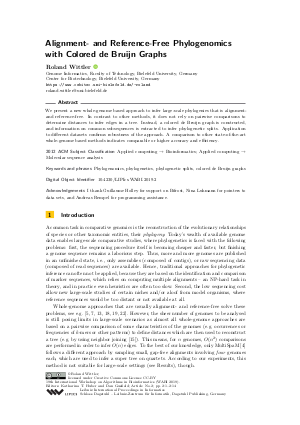LIPIcs.WABI.2019.2.pdf
- Filesize: 1.01 MB
- 14 pages

 Creative Commons Attribution 3.0 Unported license
Creative Commons Attribution 3.0 Unported license























Feedback for Dagstuhl Publishing